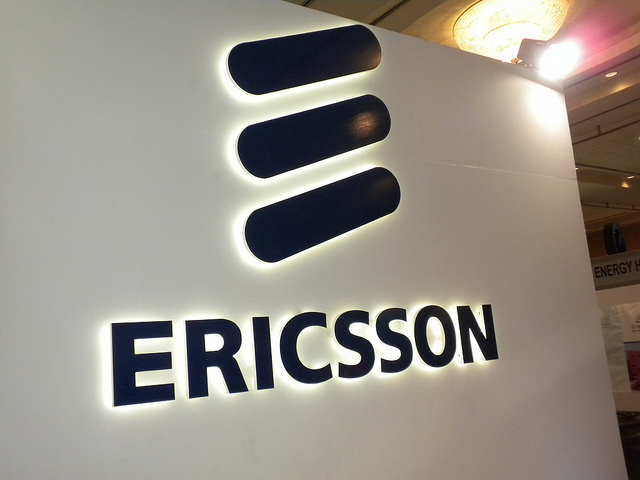ICT
What Nigeria must do to gain from 4G LTE, mobility trends – Ericsson
Published
9 years agoon
By
Olu Emmanuel
Fourth generation technology- Long-Term Evolution (4G LTE) has been projected to become dominant access technology in 2018, making it the fastest-growing mobile technology in history.
To leverage inherent benefits in the technology Nigeria must make deliberate efforts to assist telecom operators to unleash countrywide 4G LTE coverage.
Rutger Reman, managing director, Ericsson Nigeria, made the remark during a press briefing to unveil the 12th Ericsson Mobility Report 2017, saying that reports show 4G LTE as a revolutionary technology will help the country pave way for 5G.
Long-Term Evolution (LTE) is a standard for high-speed wireless communication for mobile phones and data terminals, based on the Global System for Mobile communication (GSM)/Enhanced Data rates for GSM Evolution (EDGE) and Universal Mobile Telecommunications Service (UMTS)/ High Speed Packet Access (HSPA) technologies.
Ericsson said in the report that LTE is becoming most pervasive technology in history.
“We know Nigerians are smart and innovative hence they need speed internet and expanded coverage to unleash their innovations. So, it is my view that the Government, both at the Federal and State levels must encourage investments on 4G/LTE to ensure the country leverages the technology for current revolution in the mobility ecosystem. 4G technology is a prelude to 5G which will usher in the world of Internet of Things. IoT is already happening in some climes and Nigeria can leverage the technology”, Reman said.
The Ericsson Country Manager, said that availability of 4G services will ensure more innovation in the tax system, utility/services, transportation, and e-government.
According to the Mobility report, in 2018, LTE (4G) will overtake GSM as the largest access technology by number of subscriptions.
The speed with which this technology has been rolled out and adopted is unprecedented. It has taken only five years for LTE to cover 2.5 billion people, compared to eight years for WCDMA/HSPA, or 3G. In the first quarter of this year alone, 250 million new LTE subscriptions were added.
While LTE uptake is driven by demand for improved user experience and faster networks, 5G deployment will also be driven by the need for enhanced mobile broadband capabilities as well as industry solutions for efficiency and automation.
5G will be the one network to support a diversity of use cases. More than half a billion 5G subscriptions are expected to be activated by 2022, not including IoT connections. 5G is then expected to cover around 15 percent of the world’s population.
Furthermore, the Ericsson Mobility Report shows that over one million mobile internet users are added daily.
For the next six years, nearly 2.6 billion new subscribers will be added to mobile broadband networks –enough to fill Africa’s largest soccer stadium, Soccer City in Johannesburg (with capacity of approximately 95, 000) 10 times each day.
The latest collection of statistics about the growth of subscribers and data traffic in mobile networks is presented in the June edition of the Ericsson Mobility Report. It shows the highest year-on-year mobile data growth globally since 2013, led by massive growth in India, and highlights the underlying need for mobile data. Nigeria is among the top five countries with +3 million mobile subscriptions net additions in Q1 2017.
ALSO SEE: Investors coming with $4Bn for rural telephony – Shittu
The use of smartphones and easy access to mobile internet services comprise a major part of the traffic numbers. Ericsson analyzes “smartphone mobile data traffic” within “mobile data traffic” to illustrate this trend more clearly. By the end of 2022, total smartphone mobile data traffic will have increased9X, reaching 66ExaBytes per month.
The November 2016 edition of the Ericsson Mobility Report shows that mobile data traffic continues to grow in sub-Saharan Africa, and is showing no signs of slowing down. It is forecast to grow by around 55 percent annually between 2016 and 2022.The rapid increase in mobile data traffic in Sub-Saharan Africa is driving operators to explore methods of optimizing network capacity, one of which is complementing traffic on Wi-Fi networks. Operators are offering Wi-Fi to consumers either as stand-alone or bundled with existing packages, and are extending Wi-Fi calling services to subscribers with devices bearing this capability.
Commenting on the report, Niklas Heuveldop, chief strategy officer and head of Technology and Emerging Business, Ericsson, said: “Based on measurements made in hundreds of mobile networks, the Ericsson Mobility Report data truly illustrates the tremendous underlying growth in the industry. 4G subscriptions are increasing faster than ever, Voice over LTE uptake is accelerating and traffic growth has reached levels we have not seen since 2013.
“I am particularly excited to see the industry’s major steps to progress network evolution, including the approval of the Non-Standalone 5G New Radio (NR) that will enable early 5G deployments. According to our forecast, we anticipate that this will lead to more than half a billion 5G subscriptions and a population coverage of 15 percent by 2022.”
On industry trends, the Mobility Report features articles on Internet for all, massive IoT coverage in cities and remote operation of vehicles with 5G.
You may like
Trending

 Latest4 days ago
Latest4 days agoReactions follow US strikes on terrorist targets on Christmas Day

 Latest6 days ago
Latest6 days agoNigeria’s kidnap-for-ransom industry nets N2.57bn in one year

 News3 days ago
News3 days ago2027: Lagos Lawmaker Bonu galvanize support for Tinubu’s reelection, initiates fitness walk for Constituents Wellness, Unity

 Energy7 days ago
Energy7 days agoDiesel, petrol prices ease year-on-year despite monthly fluctuations — NBS

 Latest4 days ago
Latest4 days agoPresidency debunks viral claim of change in Tinubu’s Chief of Staff

 Comments and Issues6 days ago
Comments and Issues6 days agoWhen police do the right thing

 Business7 days ago
Business7 days agoNIN now serves as tax ID for Nigerians under new tax regime — FIRS, experts clarify

 Business7 days ago
Business7 days agoNaira strengthens below N1,460/$ as CBN support sustains forex market stability



